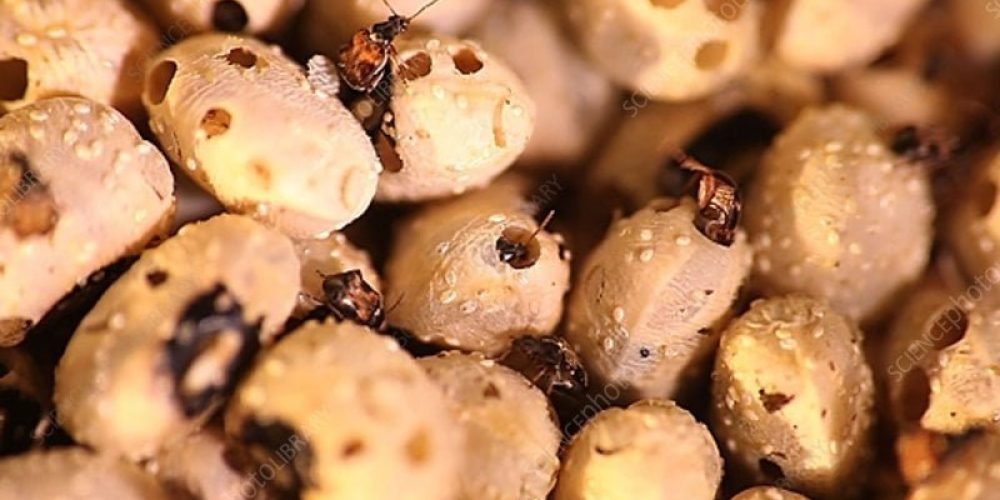Cowpea weevil
- Name of the disease
Cowpea Weevil
- The scientific name
Callosobruchus maculatus
- Type of disease Family of disease
Type: Insectivorous
Disease family: Chrysomelidae
- Symptoms of the disease
This insect causes significant losses estimated at approximately 51% and feeds on the contents of the side that loses a large portion of its weight. The most important manifestation of the infestation is the sight of live adult insects wandering over the seeds, as well as dead insects, as well as eggs attached to the seeds or the feeding chambers and their circular openings. Each seed may contain 1-4 insect.
- Causes of cowpea beetle
- Conditions suitable for the spread of the disease
The lifespan of adult insects increases with moderate temperatures and increasing relative humidity.
- Cowpea beetle development cycle
The female lays her eggs on the surface of seeds or on the surface of pods in the field. The egg sticks to the surface through a sticky substance secreted by the insect.
At a temperature of 30°C and a relative humidity of 70%, one female lays about 76-107 eggs, with an average of 91 eggs.
The eggs hatch within a period of 4-6 days and the egg-laying period is 3-9 days depending on the temperature and relative humidity.
The eggs hatch into larvae that penetrate the seed, where they live inside it until they reach the adult stage.
The larval stage takes about 20 days and then turns into a pupa after the larva settles in a small chamber that it creates directly under the seed coat to pupate in it for a period of about 7 days. The period for the insect to transform from egg to adult is about 25 - 30 days. The insect has about 11 generations per year, especially in warm regions, and about 6-7 generations in temperate and semi-cold regions. The adult insect lives at a temperature of 30°C and a relative humidity of 70% for about 5-6 days.
It has been observed that males live longer than females, with a difference of one to two days.
- Photos of the disease at its beginning and after its spread, in high quality, at least 5 photos in high quality
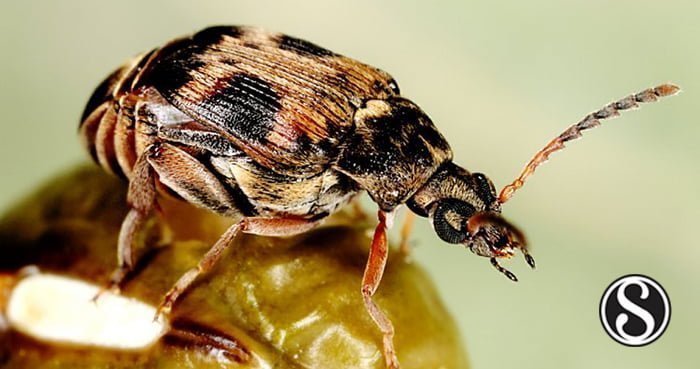
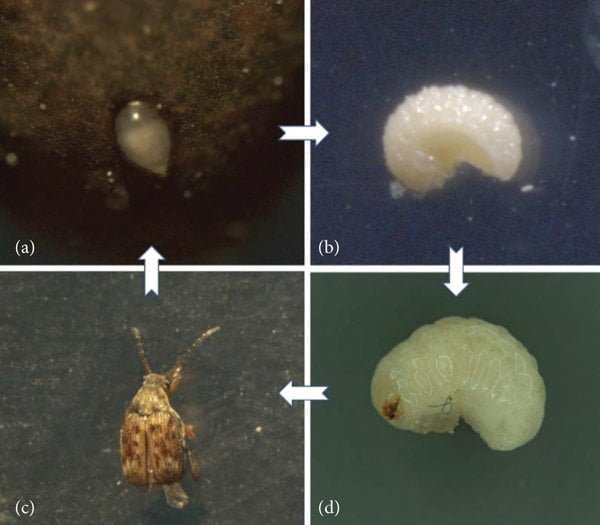

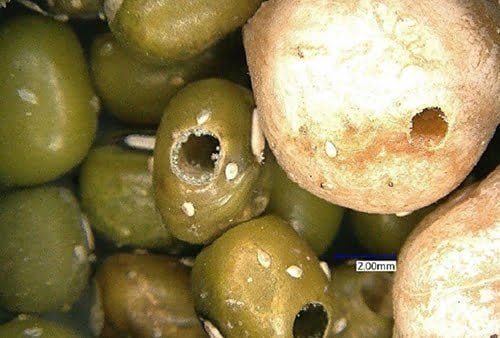
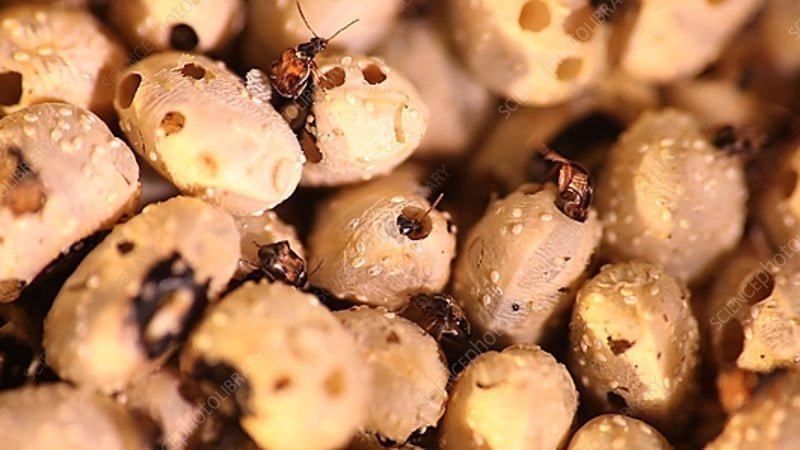
- Losses of disease spread
The cowpea beetle causes great damage to stored cowpeas, chickpeas, and beans, as it feeds on them, consumes their contents, and contaminates them, thus rendering them unfit for human and sometimes animal consumption.
- Control strategy
- Mechanical control
- Physical control (tillage, sanitation, pruning, solarization)
- Insecticides
- Preventive measures to prevent the occurrence of the disease
Stores and warehouses are treated before storage with recommended pesticides, and emphasis is placed on preventing any infected grains from infected fields from entering the warehouses, before fumigating them with approved materials and implementing occupational safety and health conditions.
- Chemical control recommendations
Deltamethrin
Lamidasihalothrin
- Anti-membership recommendations
Exposure to dry heat at 55°C for (3-4) hours.
Immerse in hot water for ten minutes, then dry and store.



